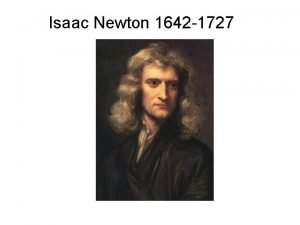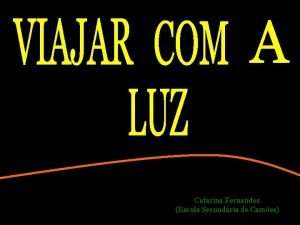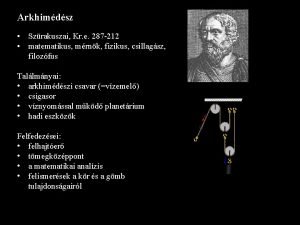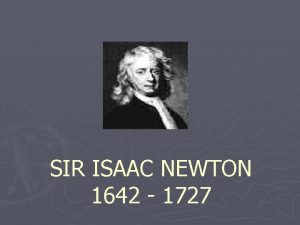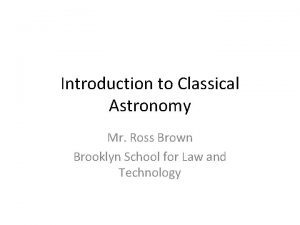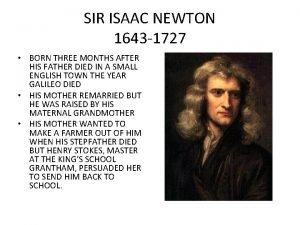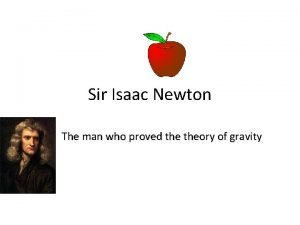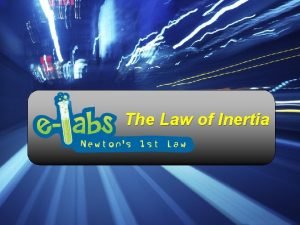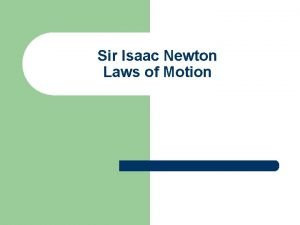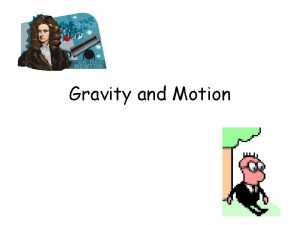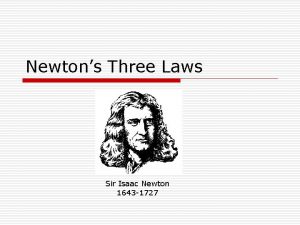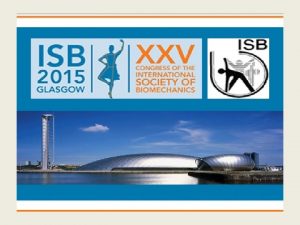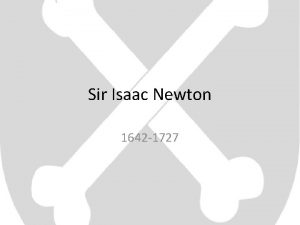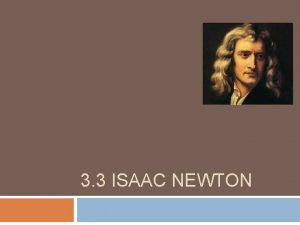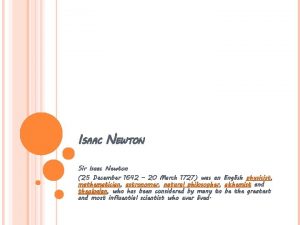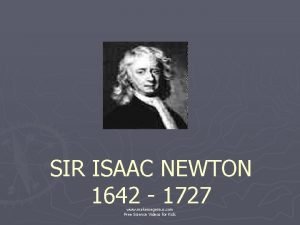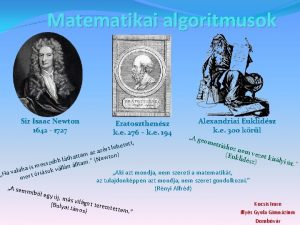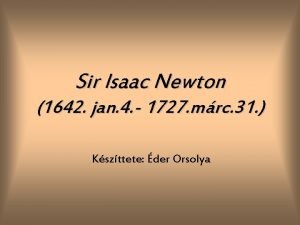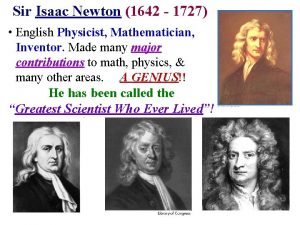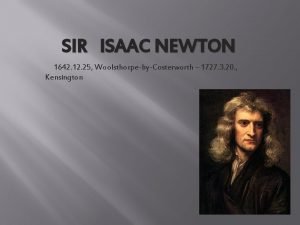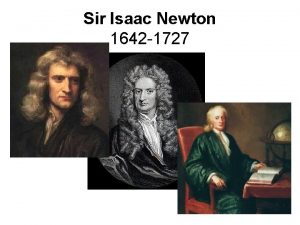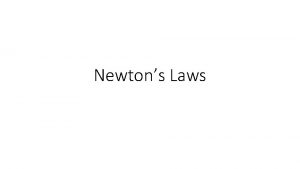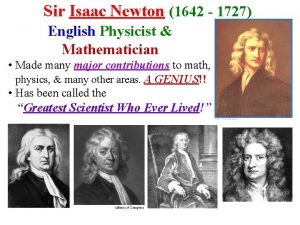M 1 Mechanics Sir Isaac Newton 1642 1727














- Slides: 14

M 1 Mechanics Sir Isaac Newton (1642 – 1727) Laws of Newtonian Motion Objective: To understand the link between Force, Mass and Acceleration.

Sir Isaac Newton Born in Woolsthorpe, Lincolnshire on Christmas Day, 1642. Although inattentive at school, Newton showed an aptitude for making mechanical devices, such as windmills and water clocks. Attended Trinity College, Cambridge and gained his degree in 1665. Newton developed early Calculus (fluxions) between 1665 and 1667. He also discovered the refraction of light through prisms and other refracting media. He wrote the Philosophiae Naturalis Principia Mathematica in 1687, describing his work on gravitation and planetary motion. This book, instantly hailed a masterpiece, demonstrated diverse phenomena such as the tides, the irregularities of the moon’s motion. This work served as the accepted system until Einstein’s work on relativity and quantum mechanics in the 1900 s. His second great treatise, the Opticks, was published in 1704, describing his work on optics. Newton served as a Member of Parliament after 1688, Master of the Mint, President of the Royal Society, and received a knighthood from Queen Anne.

Newtonian Axioms, or Laws, of Motion First Law “Every body perseveres in its state of rest, or of uniform motion in a right line, unless it is compelled to change that state by forces impressed thereon. ” Second Law “The alteration of motion is ever proportional to the motive force impressed; and is made in the direction of the right line in which that force is impressed. ” Third Law “To every action there is always opposed an equal reaction: of the mutual actions of two bodies upon each other are always equal, and directed to contrary parts. ”

First Law of Motion “Every body perseveres in its state of rest, or of uniform motion in a right line, unless it is compelled to change that state by forces impressed thereon. ” Effects: A stationary body cannot move without a force acting upon it. A moving body will not change direction or speed without a force acting upon it. A moving body will not slow down unless a force acts to retard its motion. A body that remains at rest, or in uniform motion, while seemingly being acted on by a force must have a resultant force of zero. (eg Gravity)

Second Law of Motion “The alteration of motion is ever proportional to the motive force impressed; and is made in the direction of the right line in which that force is impressed. ” Effects The acceleration of a body is proportional to the resultant force exerted on it: The proportionality constant is found to be the mass of the body: The units of Force are kg m s-2. Sir Isaac Newton named this unit after himself, and we simply use Newtons (N) instead. 1 N will push a body with mass 1 kg at an acceleration of 1 ms-2 A force cannot produce an acceleration in any other direction than the direction of the force itself.

Example A body with mass 14 kg is initially at rest. Find the force required to act on the body to produce an acceleration of 5 ms-2.

Example A body with mass 8 kg is initially at rest. A force of 12 N acts upon it. Find the acceleration of the body.

Example A body accelerates at 6 ms-2 when acted on by a 12 N force. Find the mass of the body. 6 ms-2 12 N m kg

Example Find the missing values: a) b) a ms-2 18 N 5 ms-2 25 N 3 kg m kg a = 6 ms-2 m = 5 kg c) d) FN 60 N a 12 ms-2 30 kg 1. 5 kg a = 40 ms-2 F = 360 N

Resultant Force If two or more forces act on a body, the resultant force must be found. This is the single force that would have the same effect as the existing system of forces. Example Find the acceleration, a, of the system below. a 8 N 18 N 4 kg

Example Find the missing values: a) b) a ms-2 7 N 12 N a ms-2 8 N 10 kg 8 N 7 kg a = 0. 5 ms-2 a=0 c) d) 9 ms-2 4 N 0. 5 ms-2 FN 3 N 1 kg F = 13 N 10 N m kg m = 14 kg

Forces and Motion A bus travels a distance of 280 metres while accelerating from 10 ms -1 to 18 ms-1. What is the acceleration of the bus over this time? If the resultant force applied to the bus was 1200 N, what is the mass of the bus?

Example A car accelerates from 5 ms-1 to cover a distance of 129. 6 metres in 8 seconds. The only forces acting on the car are the engine tractive force, T, and the resistance to motion, R. If the car has a mass of 1400 kg, and the engine produces a constant tractive force of 6 k. N (6000 N), how large is the resistive force, R?

Example a) A boat with mass 800 kg moves through a lake under a tractive force of 2500 N. If the resistance to motion is 1780 N, find the acceleration of the boat. b) If the boat starts at rest, find the distance travelled after 20 seconds.
